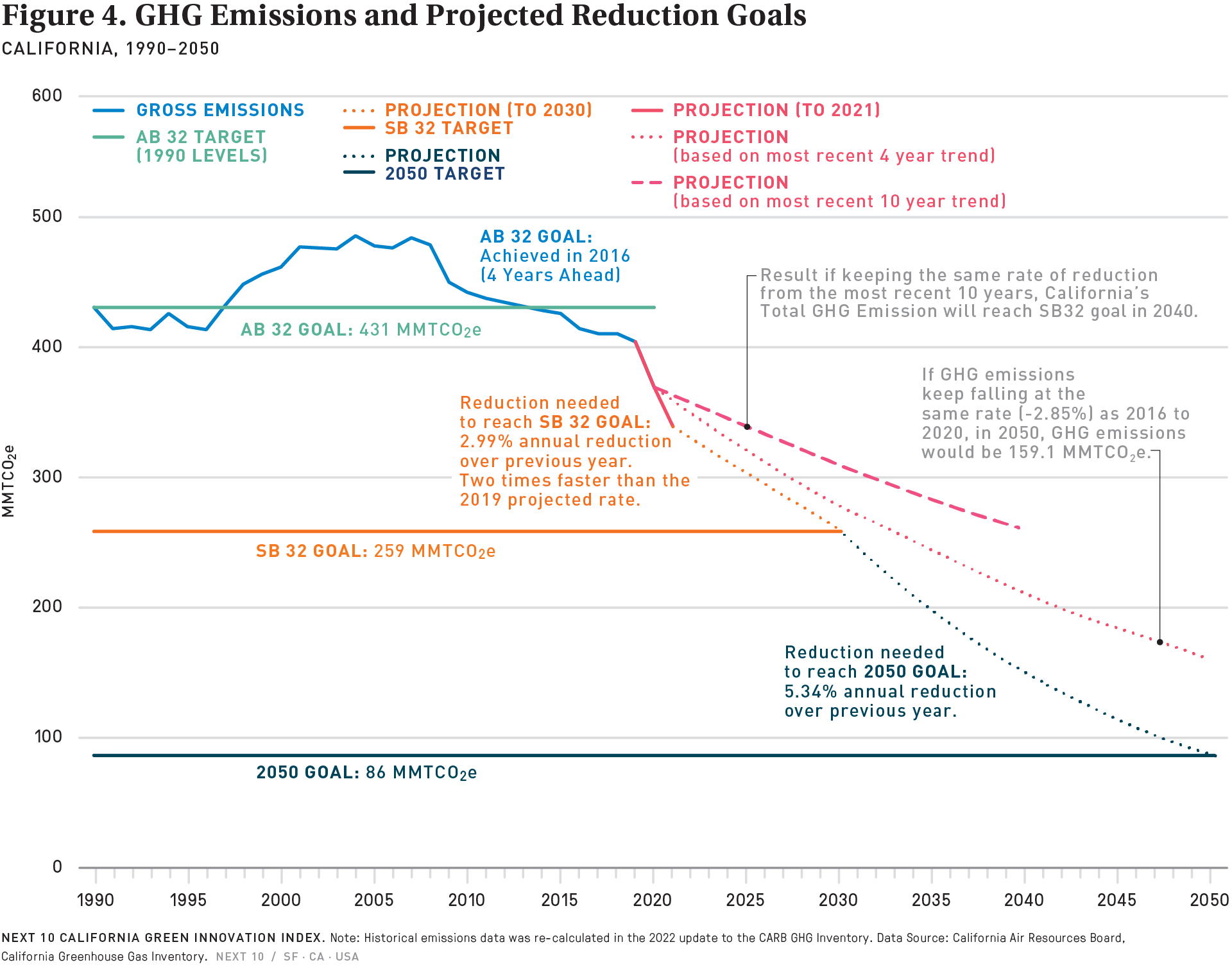Challenge
- Greenhouse gas emissions decreased by 20 percent between 2000 and 2020, a notable amount given California’s reduction target of returning to 1990 levels by 2020. By 2020, emissions had been reduced in California by only 14 percent below 1990 levels. 15 With this effort, the state cut down half the reduction requirements from the previous 4.2 percent each year in 2019 to 2.9 percent to meet the SB 32 goal by 2030. At the current trajectory, the state will take significantly less time to reach its SB 32 and 2050 goals. However, the COVID-19 pandemic induced lockdowns and the shift to work from home arrangements for a large percentage of the workforce significantly reduced GHG emissions from the transportation sector in 2020.16 National-level data also suggests that GHG emissions in 2021 were higher than in 2020. Energy-related emissions in the United States overall rose 6 percent in 2021 compared to 2020.17 Whether these 2020 emission reductions are permanent in California post-pandemic is not yet known, but given the national increase, it seems unlikely.
15 Lopez, Nadia. Slashing Greenhouse Gases: California Revises Climate Change Strategy. San Francisco Chronicle. Last updated Nov. 22, 2022. https://www.sfchronicle.com/climate/article/Slashing-greenhouse-gases-California-revises-17590556.php
16 U.S. energy-related CO2 emissions declined by 11 percent in 2020, with the transportation sector recording the largest percentage drop (-15%). Source: https://www.eia.gov/todayinenergy/detail.php?id=47496
17 U.S. Energy-Related CO2 Emissions Rose 6% in 2021. U.S. Energy Information Administration. May 13, 2022. https://www.eia.gov/todayinenergy/detail.php?id=52380
More About the
Carbon Economy
Related Content

